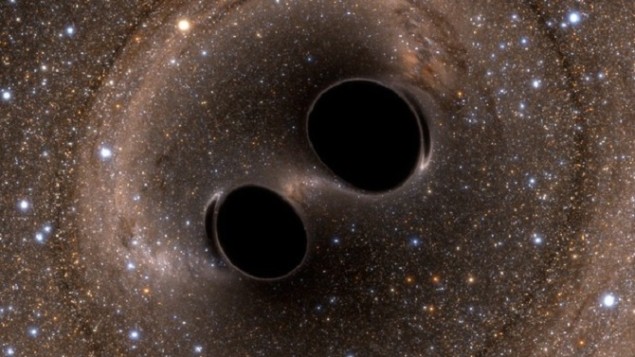
Gravitational waves are distortions in space–time that carry energy and information across the universe. Predicted by Albert Einstein in 1916, they were first observed by the two detectors of the LIGO observatory in 2015. Since then, these detectors have measured ten gravitational wave signals from binary black hole mergers and one from a system of binary neutron stars spiralling towards each other. However thermal fluctuations in the detector mirrors can compromise the sensitivity of these detectors.
Scientists at the University of Glasgow and collaborators have now developed a multimaterial coating design for the mirrors used in gravitational wave detectors. They suggest their coating will minimize thermal fluctuations at cryogenic temperatures for the next generation of detectors and will contribute to improving their sensitivity at 10 Hz by a factor of 100.
Loss limitations
The Einstein Telescope is a proposed third-generation gravitational wave observatory with the goal of a factor of at least 10 improvement in sensitivity of existing detectors such as Advanced LIGO. At low frequencies, where current detectors are quite insensitive, a factor of 100 improvement is planned, increasing the frequency band observed for gravitational waves. The hope is that this improved sensitivity will increase the observable volume of space by a factor of 1003 . This may then allow for detection of known young pulsars as well as the first detection of galactic Ia supernova.

The mirrors in gravitational wave interferometer arms are commonly coated in oxides of silicon (SiO2) and tantalum (Ta2O5). Although the optical absorption of these materials is very low, they are prone to mechanical loss (vibrations arising from thermal energy) at the low-temperature operation range of the Einstein Telescope.
Quiet coatings
Iain Martin at the University of Glasgow in the UK, alongside researchers in the UK, Germany and the US instead propose a multimaterial approach using amorphous silicon and SiO2:HfO2 with two bilayers of SiO2 and Ta2O5 deposited on top. They investigated the mechanical loss and optical absorption of their multimaterial coating using cantilever ring-down tests and photothermal common-path interferometry respectively.
LIGO could soon detect one gravitational wave per week
The team found the mechanical loss of SiO2:HfO2 to be less than half that of SiO2. In addition, the team demonstrated that this coating structure would be 25 times less noisy than current coatings (at a frequency of 10 Hz) and could contribute to increase the sensitivity of detectors by a factor of 100. The application of this novel multimaterial coating promises to usher in a new era of ultralow noise, super-sensitive gravitational wave detectors.
Full details of the research are documented in Physical Review Letters



